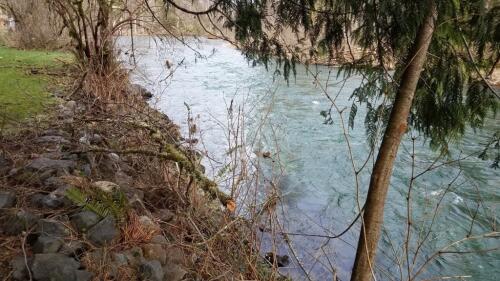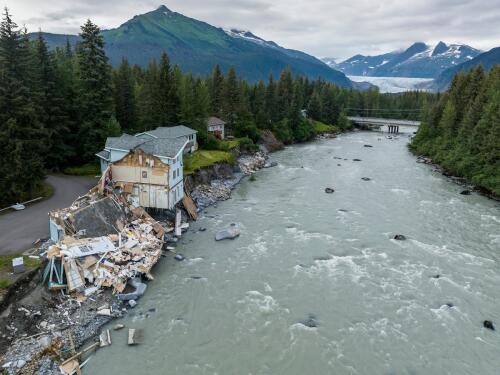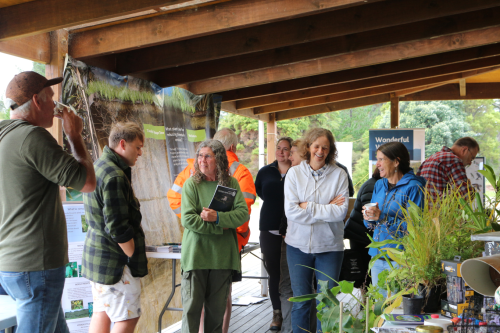news
OLYMPIA – In areas where native trees and vegetation are allowed to thrive along a riverbank, streams typically have better water quality, provide more suitable habitat for salmon and are more resilient to climate change. To boost the health of streams and rivers in the Puget Sound region, the U.S. Environmental Protection Agency has awarded the Washington Department of Ecology up to $30 million to be disbursed over the next six years. The funding comes through the federal Bipartisan Infrastructure Law. “Thanks to the Bipartisan Infrastructure Law, we are making more – and larger – investments in projects that improve water quality, stream flows and critical habitats,” said Casey Sixkiller, regional administrator for EPA’s northwest region. “These funds will help restore native vegetation along our creeks, streams, and rivers to improve water quality, as well as support recovery of local salmon runs an...
On a cool, fall evening on Lake Tahoe, researcher Sudeep Chandra stands at the back of a small boat anchored in the south end of the clear blue lake. He’s holding a device called a dredge, which looks like a large metal clamshell. “So, we’re basically going to drop this in the water,” Chandra says as he lightly tosses the dredge into the glassy lake and watches it sink to the bottom. A few seconds later, after the device snaps shut and scoops up a sample of the lakebed, Chandra reels it in and cracks it open into a shallow bucket. “We first see, of course, invasive Asian clams,” Chandra says, plucking a small shell from a pile of sediment. “These things can live two to four years old, and they can reproduce hundreds of thousands to millions of little villagers or tiny clams that go spread around the lake.” Asian clams are an invasive species that showed up in Tahoe more than 20 years ago. They give of...
This past summer was the hottest on record in the Arctic, which is warming nearly four times faster than any other location on the planet. And the symptoms of that warming laid bare a rapidly changing region that in many ways barely resembles what it once was. Key data points show that the Arctic continues to become less icy, wetter and greener, according to a report card released by the National Oceanic and Atmospheric Administration on Tuesday. The trends, all linked to a warming climate, have been observed for decades. And they played out in dramatic ways this summer: Out-of-control wildfires forced entire communities to evacuate. A river surged from its banks and into homes because of dramatic glacial thinning. Near the peak of Greenland’s ice sheet, more than 10,000 feet above sea level, temperatures rose above freezing for only the fifth time on record. Even amid rapid change, variability of weather patterns meant a few parts of the Arctic stil...
WLU’s Dr. James Wood and his BIO-207 Fundamentals of Ecology & Biodiversity class have been positively impacting the environment through meaningful service projects. At the U.S Fish and Wildlife Service’s Ohio River Islands National Wildlife Refuge on Buffalo Creek, near Wellsburg, students engaged in removing both invasive species and litter from the refuge. Monitoring and removing invasive species is important for protecting pollinators and wildlife habitats. “Getting students outside of the classroom provides students with hands-on experiences that create personal and educational connections that enrich students’ college careers. Actively engaging students in wildlife management and restoration projects like this allows students to connect with community partners on a professional level, potentially opening the door for meaningful job opportunities,” explains Dr. James Wood, Assistant Professor of Biology...
The inaugural Aotea Ecology Festival was a success in bringing together locals passionate about ecology, with support from the Aotea / Great Barrier Local Board. Annual funding from the board of $30,000 for the Aotea Ecology Vision Facilitator role contributed to delivery of a well-executed festival. It was the first year of this festival, having replaced the annual Pestival event to include the wide range of ecological work going on that isn’t pest related. “The local board is proud to support an opportunity for all our hard-working environmental groups to get together and share their amazing mahi with their community. It was an aspiring event to say the least,” says local board chair, Izzy Fordham. The event involved stalls and displays from the island’s environmental groups, schools, and government agencies, as well as presentations from guest speakers. “Our aim for Ecology Festival 2023 was to create an inclusive and po...




